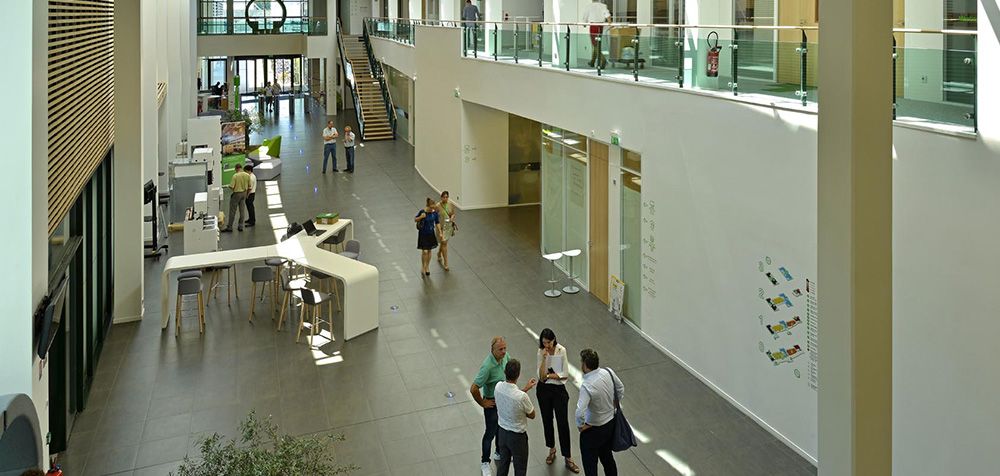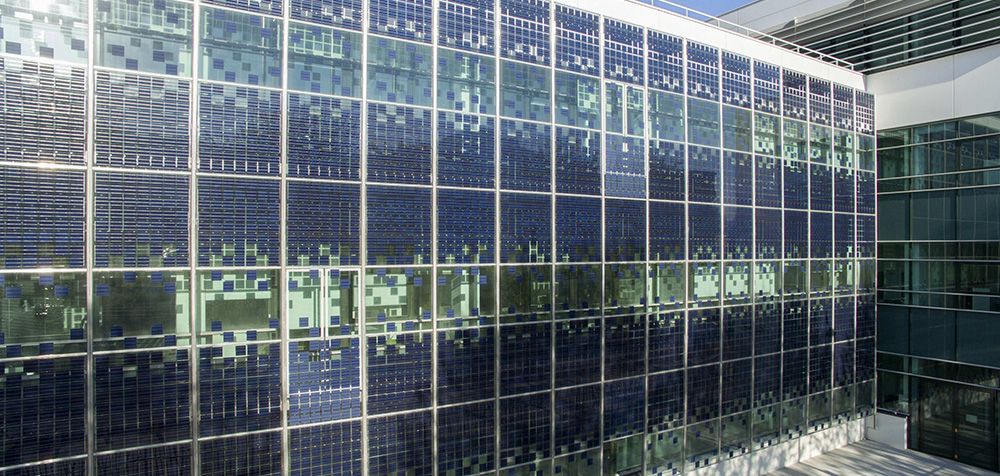[Energy Focus] Energy control through use
![[Energy Focus] Energy control through use](https://www.eclaira.org/data/sources/users/3/technopole01.webp)
Digital tools for energy efficiency: the Technopole example
Olivier Cottet, marketing director - energy research programmes at Schneider Electric, and Emmanuel Bernier, site environmental manager.
Schneider Electric, an international group specialized in energy management and automation, occupies several sites in Grenoble. The city is the historic headquarters of the company, which employs 5,000 people on 12 sites. Wanting to bring its staff together and improve cooperation, Schneider Electric has launched a two-building project with ambitious energy performance goals. The first, called Technopole, has been occupied since early 2017
A workplace designed as a living lab
Technopole was designed to optimize space while improving the use and satisfaction of the 600 people who work on the premises. It is also a “living lab” where Schneider Electric's know-how has been applied in the areas of innovation, collaboration, energy efficiency, environment and health. It mainly houses teams of researchers and engineers who draw data to optimize the design, construction and operation of buildings from the place where they work.
Energy control through uses
Technopole was designed to meet with two challenges: to build a high-performance energy building and to integrate uses, meaning the way occupants live in the premises. This approach combines comfort and savings.
In France, regulation RT2012 sets requirements on heating, air conditioning, domestic hot water production, lighting and auxiliary equipment such as ventilation, but these items are no longer the biggest energy consumers. Thought must now be given to uses and to other items such as printers, electric sockets, PCs, etc.

Following this logic, the Technopole building is driven by the uses to which it is put. Energy is managed according to the occupancy of the premises, which become a source of savings when they are empty. This happens regularly because there is a lot of mobility on the site, employees’ time being divided between their office and the laboratories.
An ambitious design
Understanding uses is part of Schneider Electric’s business, helping them to provide tailored offers to their customers. The company has developed a method to incorporate uses into the specifications. People involved in building Technopole worked closely together to meet its specifications and to apply the criteria of the LEED2 label. All the trades used a common tool: BIM. This digital model of the building or “digital twin” makes it easier for the different people involved to work together. It is also a tool for Schneider Electric’s R & D teams. In addition, the design choices were subjected to an energy simulation tool highlighting their effects on building efficiency.
These innovations in the design of the site come with new ways to control it. Room control is used to manage the building on a room-by-room basis, and not by item (light, heating, etc.).

Technologies serving energy efficiency
Technopole is aiming at a consumption target of 45 kWh / m2 / year for all uses taken together, with the technologies used. Digital technology undeniably contributes to the energy efficiency of the building via several functions:
- Design software used by building professionals
- The manufacture of data from sensors, intended for the technical management of the building
- Information tools for stakeholders who operate the building: collection of data on comfort, energy, etc. in order to draw up spreadsheets
- Data creation to fuel engineers’ research
A global approach
Schneider Electric is committed to a more global approach to sustainable development. The Technopole site is ISO 50001 (energy management) and ISO 14001 (environmental management) certified. Actions are carried out concerning water and paper consumption, procurement for the company restaurant and waste recovery.
In addition, the company has signed a charter with Grenoble-Alpes Métropole in which it undertakes to reduce its energy consumption and its CO2 emissions by 40% between 2015 and 2020. It is also committed to air quality and provides electric vehicles for travel between sites.
These approaches are backed by communication with users: energy consumption is displayed in the company, a booklet on sustainable development work is published annually, and awareness campaigns are carried out.
And tomorrow?
The second building of the real estate project to which Technopole belongs, named IntenCity, will be delivered in late 2019. It targets a consumption of 37 kWh / m2 / year and will be energy -positive through the different sources of energy production used. It has been designed to take uses into account in even more detail, for example by linking office tools such as meeting room reservation and building management.
Video above: Delivery of the first site in the GreenOValley programme in Grenoble (2017)
For more information: Schneider Electric France Technopole inauguration press release
Photo credits Schneider Electric France
Source: ECLAIRA - Newsletter No. 13 / March 2019
>Read and download the ECLAIRA Newsletter No. 13 as a PDF
>Read other articles in this issue
>See all the ECLAIRA newsletters
